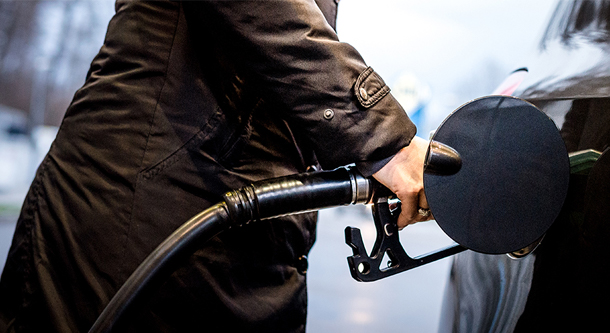
Today’s national gas price average of $2.42 is the lowest pump price of the year, a price point not seen since mid-December last year. The average sits at four cents cheaper than last week, 28-cents cheaper than last month and four cents less than last year. The last time the national average was cheaper on the week, month and year was during July 2017.
“Motorists are noticing a big difference as they fill-up at the gas pump this month,” said Jeanette Casselano, AAA spokesperson. “Month-over-month, gas price averages have dropped double digits for every state. For some in the Great Lakes and Central states (Iowa, Kansas, Nebraska and Missouri) state gas prices are as much as 40-cents less than they were in November. In some states, gas prices are nearing $2 per gallon – something that hasn’t been seen since December 2017.”
How low can gas prices go? AAA expects the national gas price average to drop as low as $2.40 by the end of the year due to cheaper crude oil prices. However, pump prices this cheap may not last into 2019. On Friday, the Organization of the Petroleum Exporting Countries (OPEC) announced that the cartel and non-OPEC members, including Russia, will reduce production by 1.2 million b/d for the first six months of the year. While the decision will help to reduce the high level of global crude supply, the move has the potential to increase oil and gas prices. Crude was up to $52.61 at the market close on Friday, while the week prior, crude was as cheap as $50/bbl.
Quick Stats
- The nation’s top 10 largest monthly decreases are: Iowa (-40 cents), Kansas (-40 cents), Nebraska (-40 cents), Missouri (-38 cents), Arkansas (-37 cents), South Dakota (-36 cents), Georgia (-36 cents), Wisconsin (-36 cents), Mississippi (-36 cents) and Alabama (-36 cents).
- The nation’s top 10least expensive markets are: Missouri ($2.00), Oklahoma ($2.06), South Carolina ($2.06), Texas ($2.08), Kansas ($2.09), Alabama ($2.09), Arkansas ($2.09), Mississippi ($2.10), Louisiana ($2.10) and Iowa ($2.15).

Great Lakes and Central
While most of the country is seeing decreases, gas prices have jumped noticeably on the week for motorists in Michigan (+7 cents), Indiana (+7 cents), Ohio (+6 cents) and Kentucky (+3 cents). The increase is unexpected as demand is declining and supply increased in the region on the week. Conversely, gas prices are as much as eight cents cheaper for all other states in the Great Lakes and Central region with four states landing on the top 10 with the largest weekly changes: North Dakota (-8 cents), Wisconsin (-7 cents), Minnesota (-7 cents) and Kansas (-7 cents). Overall, the Great Lakes and Central region often experiences periods of volatility.
State gas price averages in the region range from $2.40 in South Dakota to $2.00 in Missouri. In fact, motorists in Missouri can find gas for $2/gal or less at 70 percent of gas stations in the state.
Gasoline stocks in the Great Lakes and Central region built by a surprising 2.6 million bbl on the week, according to Energy Information Administration (EIA). With refinery utilization dropping by one percent, the increase in stocks is likely attributed to a drop in demand as expected this time of year. Total stocks sit at 49.4 million bbl.

South and Southeast
More than half of all South and Southeast states have gas price averages at or under $2.10: Louisiana ($2.10), Mississippi ($2.10), Arkansas ($2.09), Alabama ($2.09), Texas ($2.08), South Carolina ($2.06) and Oklahoma ($2.06). More so, motorists can find stations selling regular unleaded for $2/gal or less in every state in the region. Oklahoma (56 percent) has the largest percentage of gas stations at this mark.
Gas prices are five to seven cents cheaper on the week and as much as 17 cents less expensive year-over-year across the region.
With a 2 million bbl draw, the region saw the largest decline in gasoline stocks in the country on the week. According to EIA, total stocks sit at 80.7 million bbl, which is a surplus of 2.3 million bbl year-over-year. Regional refinery utilization remained at 97 percent, indicating that the large draw could be attributed to exports.

Mid-Atlantic and Northeast
Gas prices are as much 33 cents cheaper on the month in the Mid-Atlantic and Northeast states. While all state gas price averages are less expensive month-over-month, motorists in these states are saving at least a quarter/gallon when filling up: Tennessee (-33 cents), North Carolina (-30 cents), West Virginia (-29 cents), Maine (-25 cents) and Virginia (-25 cents). On the week, gas prices dropped as much as six cents.
Regional refinery utilization jumped to 93 percent (up from 77 percent two weeks ago) as stocks built, but only by 322,000 bbl. Total gasoline stocks continue to measure above the 61 million bbl mark for the third week, which is nearly a 3 million bbl surplus year-over-year.
Rockies
Gas prices continue to trend cheaper across the Rockies. On the week, Colorado (-9 cents) has the largest decrease in pump prices in the country. With a seven-cent decline, Idaho and Montana saw the largest decreases on the week. Utah (-5 cents) and Wyoming (-4 cents) consumers are also paying less to fill up at the start of the week. State gas price averages range from $2.49 to $2.83, which are more expensive than this time last year.
Regionally, gasoline stocks built by 126,000 bbl as refinery utilization dropped to 94 percent. Year-over-year stocks are comparable, with the EIA reporting the Rockies region touting a total of 6.9 million bbl.
West Coast
Motorists in the West Coast region continue to pay the highest pump prices in the nation, with all of the region’s states landing on the nation’s top 10 most expensive list. Hawaii ($3.57) is the nation’s most expensive market, followed by California ($3.45), Washington ($3.25), Alaska ($3.14), Nevada ($3.09), Oregon ($3.07), and Arizona ($2.75). While expensive, they are getting cheaper with all state averages being lower on the week: Alaska (-8 cents), Hawaii (-7 cents) and California (-7 cents) saw the largest drops.
The EIA’s weekly petroleum status report for the week ending on November 30, showed West Coast gasoline stocks increased by approximately 700,000 bbl to 27.7 million bbl. Stocks are approximately 2 million bbl lower than at this time last year, which could cause prices to spike if there is a supply challenge in the region this week.
Oil market dynamics
At the close of Friday’s formal trading session on the NYMEX, WTI increased $1.12 to settle at $52.61. Oil prices rallied at the end of last week after OPEC announced that beginning in January 2019, the cartel – alongside non-OPEC members, including Russia – will reduce combined crude oil production by 1.2 million b/d. The cut will be in place for six months and will use October 2018 as a baseline, a time when OPEC and Russia had less crude output than in November. With the announcement, crude prices will likely increase in 2019 ahead of the higher demand driving season next summer. Increased crude prices will likely lead to higher gas prices, given that approximately 50 percent of the cost motorists pay at the pump is based on the cost of crude used to make gasoline.
In related news, EIA’s report for the week ending on November 30 revealed that crude inventories decreased by 7.3 million bbl after 10 weeks of consecutive growth. Total domestic crude inventories now sit at 443.2 million bbl, which is approximately 5 million bbl less than their level at this time last year. Declining inventories contributed to the increase in crude prices this week, and if the trend continues, prices could climb further.
Motorists can find current gas prices along their route with the free AAA Mobile app for iPhone, iPad and Android. The app can also be used to map a route, find discounts, book a hotel and access AAA roadside assistance. Learn more at AAA.com/mobile.
